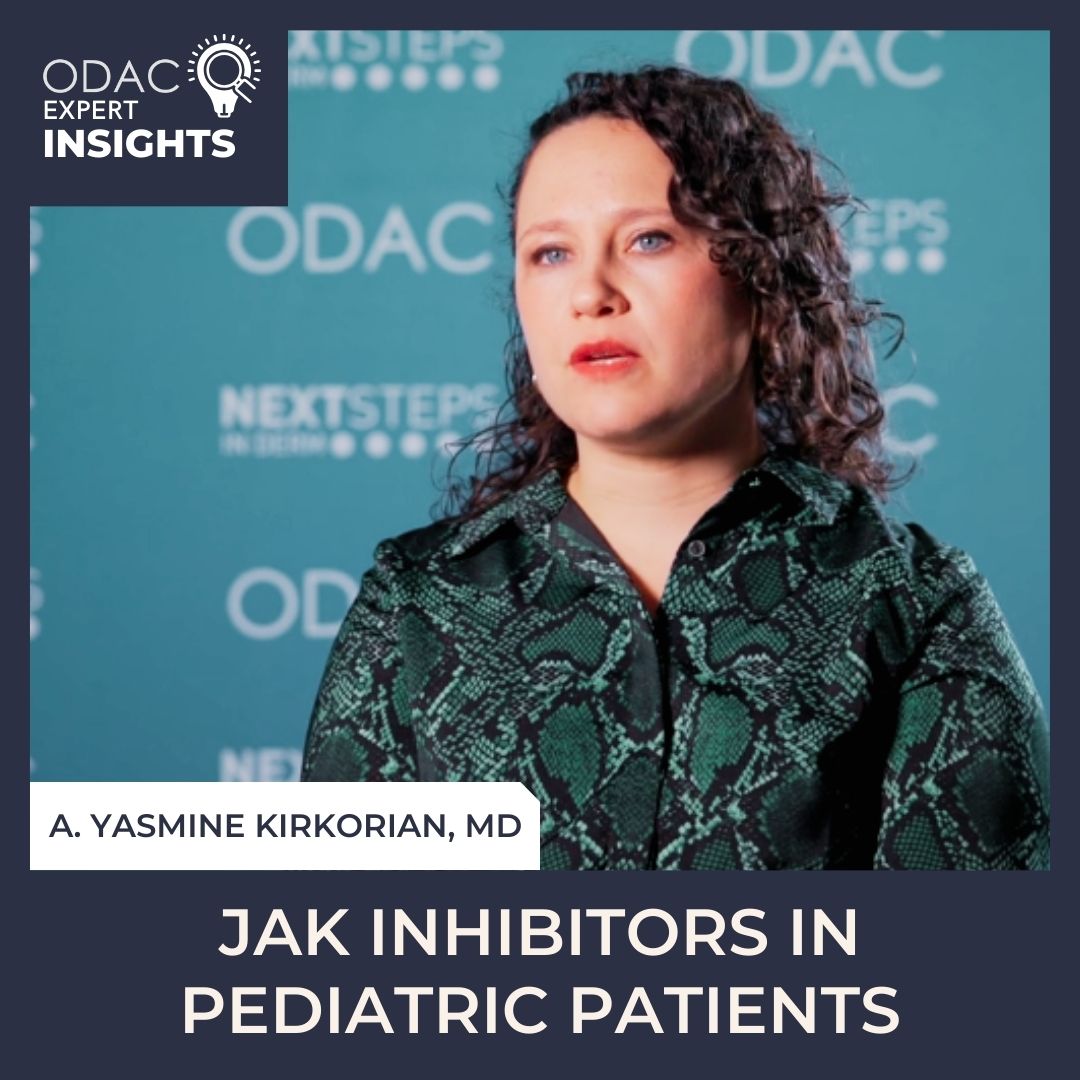Be excited about the new medications approved for use in pediatric patients, says Dr. A. Yasmine Kirkorian, chief of dermatology at Children’s National Hospital. Next Steps in Derm, in partnership with ODAC Dermatology, Aesthetic & Surgical Conference, interviewed Dr. Kirkorian about the use of JAK inhibitors in children. Should dermatology clinicians prescribe JAK inhibitors in this patient population? Learn how Dr. Kirkorian approaches the risks and benefits of JAK inhibitors, and why parent conversations are a must. Plus hear what Dr. Kirkorian thinks of the future of JAK inhibitors in pediatric dermatology.
Further Reading
If you want to read more about JAK inhibitors in pediatric dermatology, check out the following articles published in the Journal of Drugs in Dermatology:
The Pediatric Dermatologist’s View of Pediatric Vitiligo
ABSTRACT
Background: No guidelines exist for pediatric vitiligo.
Objective: To identify practice patterns of pediatric dermatologists treating vitiligo.
Methods: A PeDRA survey was completed online by 56 pediatric dermatologists.
Results: Practitioners reported feeling most comfortable treating 13- to 17-year-olds and least comfortable treating infants. Quality of life was assessed by interview in 89.3%. Topical calcineurin inhibitors (TCIs), topical corticosteroids (TCSs), narrowband UVB, coverup makeup, topical JAK inhibitors (tJAKis), and 308-nm laser were the leading vitiligo therapeutics chosen. 94.5% of practitioners reported experiencing frustration due to difficulties procuring therapies.
Conclusion: Pediatric vitiligo has notable effects on quality of life. Some therapeutic options exist which are preferred by pediatric dermatologists. There is a need for more data on therapeutics in infants and young children.
Treatment of Alopecia in Children
ABSTRACT
Alopecia or hair loss in children is an important and often challenging problem to diagnose and treat. Early diagnosis and treatment is the key because hair loss in children has a significant physical as well as psychological impact on their development. Alopecia in children are mainly non-scarring, but cicatricial alopecia can also be seen. The diagnosis can usually be made by direct examination of the scalp. Potassium hydroxide (KOH) examination of plucked hair and scalp scrapings, woods lamp examination and trichoscopy are useful diagnostic aids. When a cicatricial alopecia is suspected, scalp biopsy is recommended. Disease specific treatment should be initiated early and adequate counselling provided to both the patient and their parents. This review focuses on the treatment options available for various types of alopecia in children and their safety and efficacy data, analyzing the available literature evidences.
Did you enjoy this video interview? Find more here.

